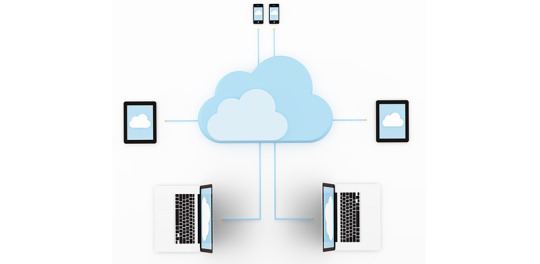#File Sync Azure
Explore tagged Tumblr posts
Text
File Sync Azure: New Updates Announced by Microsoft

Companies of all sizes must address growing data volumes and the need for efficient, scalable, and economical file storage solutions. Microsoft Azure Storage understands these demands. This is why it keeps coming up with fresh ideas for Azure Files, its fully managed cloud file sharing service. Azure Files manages hundreds of millions of file shares with billions of files for department and general purpose shares, business-critical application data, and hybrid datasets with seamless cloud tiering.
Microsoft unveiled many creative upgrades to Azure Files and File Sync Azure to simplify file data management. These updates boost speed, cost optimisation, security, administrative convenience, and intelligent support for your company.
What's Azure FileSync?
With File Sync Azure, you can centralise your company's file sharing in Azure Files while keeping Windows file server compatibility, performance, and flexibility. File Sync Azure may transform Windows Server into a quick cache of your Azure file share, even though some clients may wish to keep a complete copy locally. Access your data locally using any Windows Server protocol like SMB, NFS, or FTPS. Worldwide, you may have as many caches as needed.
Provisioned v2 for Azure Files grows and minimises TCO
Cloud storage costs can be difficult to manage for many enterprises. While theoretically simple, hard disc drive (HDD) Azure Files' pay-as-you-go model can make file storage costs challenging to forecast and budget. Although you pay for storage and transactions, unpredictable workloads make it hard to predict transaction volumes. The new v2 pricing mechanism for HDD Azure Files from Microsoft Azure maximises cloud spending.
This provided model replaces usage-based pricing, giving you control and predictability over file storage costs. Grant v2 lets you reserve storage space, IOPS, and throughput based on business needs and pay for them. Because of this, you can confidently shift general-purpose workloads to Azure Files for the optimal price-performance balance.
The HDD provided v2 model's performance restrictions and cost savings have increased compared to the HDD pay-as-you-go technique. With 50,000 IOPS and 5 GiB/sec throughput, the maximum share size is now 256 TiB, double the previous limit of 100 TiB. These boundaries become more critical as your data footprint grows. Provisioned v2 allows your Azure file share to dynamically scale performance based on demand, preventing downtime. Avoiding complex and inconvenient workarounds like sharding lets you maintain a logical and user-friendly file sharing structure for your organisation.
Provisioned v2's per-share granular monitoring lets you optimise storage, IOPS, and throughput by file share. New indications include Transactions by Max IOPS, Bandwidth by Max MiB/sec, File Share Provisioned IOPS, File Share Provisioned Bandwidth MiB/s, and Burst Credits for IOPS provide complete resource utilisation insights for better provisioning control.
Increase workload efficiency via metadata caching
Many organisations use Azure Files SSD for AI/ML on Azure Kubernetes Service (AKS), Moodle, CI/CD pipelines, and virtual desktops. These circumstances often have performance limits from frequent file system metadata operations. Although important, directory listing and file attribute retrieval can affect an application's responsiveness and efficiency if metadata operations are slow.
It cached Azure Files SSD information to address this critical performance requirement. This feature addresses this issue by reducing latency and improving metadata consistency via a caching mechanism. Organisations should expect 55% lower metadata latency and three times higher metadata IOPS and throughput.
Metadata Caching is improving Suncor Energy's GIS usage.
Optimise hybrid clouds using File Sync Azure
Big data upgrades and cloud migrations require efficient data transport and synchronisation. File Sync Azure now syncs 200 items per second thanks to speed improvements. This tenfold improvement over the previous two years supports File Sync Azure's ability to facilitate easy migrations and effective data management, especially for hybrid applications and branch office file consolidation.
This efficiency improvement is especially useful when implementing large file permission modifications or migrating from on-premises file servers. You can manage larger datasets better, transition to File Sync Azure faster, and accelerate cloud modernisation.
File Sync Azure now supports Microsoft's latest server architecture. From Windows Server 2025 to Windows Server 2016, the File Sync Azure extension for Windows Admin Centre supports several server operating systems, allowing enterprises flexibility independent of their server architecture.
Integrating with Windows Admin Centre (WAC) lets you manage all File Sync server configurations from one place. Saves time, simplifies administration, and reduces complexity. This powerful combo lets you utilise Windows Server as a fast cache for your Azure file sharing and cloud tiering for cost-effective and optimal data management.
Copilot in Azure for File Sync Azure gives you an AI-powered assistant to analyse your environment and find the root causes of common issues like network connection, permissions, and missing file shares. Step-by-step instructions and practical solutions are provided by Copilot. It can save storage costs by automating lifetime management rules that tier or destroy data based on access patterns.
Improve workload and data security with Azure Files
File Sync Azure supports Managed Identities (MI), a key security and authentication upgrade. This technology allows Azure File Sync resources to authenticate and communicate with Azure File shares using Entra ID-based authentication without shared keys, boosting security. Managed Identities may increase File Sync Azure deployment security, automate credential management, and meet cloud security best practices.
Vaulting makes Azure Files HDD layer data protection easier. This functionality meets security and compliance standards and protects against ransomware by isolating backups in a Recovery Services vault. Snapshots provide fast recovery, while vaulted backups protect against ransomware and unintentional destruction. Backup data may be stored in economical, safe, and unchangeable storage for 99 years. Cross-region restoration lets you recover from a deleted file share.
Migrate to Azure Files using integrated tools
If you want to effortlessly transfer your Windows Server, Linux, or NAS systems to Azure, you may use easy tools. File Sync Azure and Azure Mover simplify Windows Server migration. Azure Storage migration allows you to utilise industry-leading file transfer tools like Komprise, Data Dynamics, and Atempo to identify, evaluate, and migrate data from NAS systems to Azure for free.
Prepare to revamp File Storage
Azure Files empowers your firm with lower TCO for business-critical tasks, greater scaling and data protection, Managed Identities, robust migration capabilities, and Copilot in Azure. Expect more, as always. Azure Files' goal for the coming year will prioritise security, performance, and management updates to help clients achieve more.
#technology#technews#govindhtech#news#technologynews#File Storage#File Sync Azure#Azure Files#Azure File Sync#Provisioned v2#metadata caching#Windows Admin Center#Managed Identities
0 notes
Text
CLOUD COMPUTING: A CONCEPT OF NEW ERA FOR DATA SCIENCE

Cloud Computing is the most interesting and evolving topic in computing in the recent decade. The concept of storing data or accessing software from another computer that you are not aware of seems to be confusing to many users. Most the people/organizations that use cloud computing on their daily basis claim that they do not understand the subject of cloud computing. But the concept of cloud computing is not as confusing as it sounds. Cloud Computing is a type of service where the computer resources are sent over a network. In simple words, the concept of cloud computing can be compared to the electricity supply that we daily use. We do not have to bother how the electricity is made and transported to our houses or we do not have to worry from where the electricity is coming from, all we do is just use it. The ideology behind the cloud computing is also the same: People/organizations can simply use it. This concept is a huge and major development of the decade in computing.
Cloud computing is a service that is provided to the user who can sit in one location and remotely access the data or software or program applications from another location. Usually, this process is done with the use of a web browser over a network i.e., in most cases over the internet. Nowadays browsers and the internet are easily usable on almost all the devices that people are using these days. If the user wants to access a file in his device and does not have the necessary software to access that file, then the user would take the help of cloud computing to access that file with the help of the internet.
Cloud computing provide over hundreds and thousands of services and one of the most used services of cloud computing is the cloud storage. All these services are accessible to the public throughout the globe and they do not require to have the software on their devices. The general public can access and utilize these services from the cloud with the help of the internet. These services will be free to an extent and then later the users will be billed for further usage. Few of the well-known cloud services that are drop box, Sugar Sync, Amazon Cloud Drive, Google Docs etc.
Finally, that the use of cloud services is not guaranteed let it be because of the technical problems or because the services go out of business. The example they have used is about the Mega upload, a service that was banned and closed by the government of U.S and the FBI for their illegal file sharing allegations. And due to this, they had to delete all the files in their storage and due to which the customers cannot get their files back from the storage.
Service Models Cloud Software as a Service Use the provider's applications running on a cloud infrastructure Accessible from various client devices through thin client interface such as a web browser Consumer does not manage or control the underlying cloud infrastructure including network, servers, operating systems, storage
Google Apps, Microsoft Office 365, Petrosoft, Onlive, GT Nexus, Marketo, Casengo, TradeCard, Rally Software, Salesforce, ExactTarget and CallidusCloud
Cloud Platform as a Service Cloud providers deliver a computing platform, typically including operating system, programming language execution environment, database, and web server Application developers can develop and run their software solutions on a cloud platform without the cost and complexity of buying and managing the underlying hardware and software layers
AWS Elastic Beanstalk, Cloud Foundry, Heroku, Force.com, Engine Yard, Mendix, OpenShift, Google App Engine, AppScale, Windows Azure Cloud Services, OrangeScape and Jelastic.
Cloud Infrastructure as a Service Cloud provider offers processing, storage, networks, and other fundamental computing resources Consumer is able to deploy and run arbitrary software, which can include operating systems and applications Amazon EC2, Google Compute Engine, HP Cloud, Joyent, Linode, NaviSite, Rackspace, Windows Azure, ReadySpace Cloud Services, and Internap Agile
Deployment Models Private Cloud: Cloud infrastructure is operated solely for an organization Community Cloud : Shared by several organizations and supports a specific community that has shared concerns Public Cloud: Cloud infrastructure is made available to the general public Hybrid Cloud: Cloud infrastructure is a composition of two or more clouds
Advantages of Cloud Computing • Improved performance • Better performance for large programs • Unlimited storage capacity and computing power • Reduced software costs • Universal document access • Just computer with internet connection is required • Instant software updates • No need to pay for or download an upgrade
Disadvantages of Cloud Computing • Requires a constant Internet connection • Does not work well with low-speed connections • Even with a fast connection, web-based applications can sometimes be slower than accessing a similar software program on your desktop PC • Everything about the program, from the interface to the current document, has to be sent back and forth from your computer to the computers in the cloud
About Rang Technologies: Headquartered in New Jersey, Rang Technologies has dedicated over a decade delivering innovative solutions and best talent to help businesses get the most out of the latest technologies in their digital transformation journey. Read More...
#CloudComputing#CloudTech#HybridCloud#ArtificialIntelligence#MachineLearning#Rangtechnologies#Ranghealthcare#Ranglifesciences
9 notes
·
View notes
Text
Rhythm game Gunvolt Records Cychronicle announced for PS5, Xbox Series, PS4, Xbox One, Switch, and PC
Gematsu Source

Inti Creates has announced Gunvolt Records Cychronicle, the first rhythm game in the Azure Striker Gunvolt series. It will launch for PlayStation 5, Xbox Series, PlayStation 4, Xbox One, Switch, and PC via Steam on February 15, 2024 for $14.99, and can be expanded with downloadable content packs. It will also be playable at Tokyo Game Show 2023, which will run from September 21 to 24 at Makuhari Messe in Chiba, Japan.
In Japan, a physical edition will also be available for PlayStation 5 and Switch for 5,280 yen. A limited edition will also be available for 9,980 yen, which includes the Gunvolt Records Cychronicle Instrumental Album (35 tracks, three discs), drama CD (one disc), and an acrylic stand. Pre-orders for either physical edition include an A4 clear file.
Get the details below.
■ What is GUNVOLT RECORDS Cychronicle?

GUNVOLT RECORDS Cychronicle is new rhythm music game starring the songstresses of the Azure Striker Gunvolt series, Lumen, Lola, and Luxia singing music from the series’ rich history. Players will time their button presses to a barrage of notes along two different lanes to earn high scores. The dual analog controls sync with the characters dancing in the 3D backgrounds for a fully immersive experience. GUNVOLT RECORDS Cychronicle will release digitally for $14.99 USD, with downloadable content packs also available to expand the game’s track library.
■ Game Features
A New Rhythm Experience Where You’re In Sync with the Muses
The notes flowing from the top of the screen come in various types: push the buttons to Tap Notes and Hold Notes, and move the sticks with Flick Notes and Slide Notes. When you’re flicking in eight different directions and sliding in arcs on the analog sticks, your movements will synchronize with the dancing divas in the background, just as if you were dancing along with them.



In addition to gamepad controls, the Nintendo Switch version will feature an optional touchscreen mode as well.
Includes a Sound Player with Full Length Vocal Tracks
All included tracks and planned downloadable content are selected from the vast library of acclaimed vocal tracks from the Gunvolt series, including tracks used in the series’ five games, CD-only releases, and Gunvolt animated feature. Players can listen to any of the music included in the game freely in the in-game music player. Use the included repeat and playlist functions to create your own listening mix!

The Muses Add Their Charm and Elegance
The Muses, Lumen and Lola, alongside The Djinn, Luxia, dance with enchanting movement and provide their voices for a complete experience. Should repeated misses cause you to fail a song, their Anthem abilities will revive your run, allowing players of any skill level to enjoy the rhythm gameplay without worry.
Cast:
The Muse, Lumen (voiced by Megu Sakuragawa)
The Muse, Lola (voiced by Mayu Mineda)
The Djinn, Luxia (voiced by Rico Sasaki)



Scenes from the Series Create a Nostalgic Musical Journey
In addition to the music videos of the songstresses, songs can be played featuring gameplay footage and scenes from the Azure Striker Gunvolt series.


Different songs will feature various gameplay videos, giving series fans a nostalgic look at past experiences, and new fans a look into the games where the enchanting singers made their debuts.
■ Characters
“The Muse” Lumen (voiced by Megu Sakuragawa)
A popular, down-to-earth virtual idol affiliated with the Sumeragi Group. Lumen frequently puts on virtual concerts as part of her idol life.


“The Muse” Lola (voiced by Mayu Mineda)
Normally a flying battle pod who controls a multitude of tiny machines in combat, Lola also transforms into a humanoid Muse form. She uploads her own songs to the internet where she takes on the identity of the virtual idol known as The Muse of Hope.


“The Djinn” Luxia (voiced by Rico Sasaki)
The manifestation of the mysterious girl Layla’s powers, Luxia performs as the ATEMS organization’s songstress. She has a free-spirited personality, and tends to throw concerts without warning according to her own personal whims.


■ Key Visual

Watch the announcement trailer below. View the first screenshots at the gallery. Visit the official website here.
Announce Trailer
English
youtube
Japanese
youtube
#Gunvolt Records Cychronicle#Azure Striker Gunvolt#Gunvolt#Inti Creates#Rhythm Game#Gematsu#Well that's different but weirdly makes sense.#Youtube
10 notes
·
View notes
Text
Advanced Techniques in Full-Stack Development

Certainly, let's delve deeper into more advanced techniques and concepts in full-stack development:
1. Server-Side Rendering (SSR) and Static Site Generation (SSG):
SSR: Rendering web pages on the server side to improve performance and SEO by delivering fully rendered pages to the client.
SSG: Generating static HTML files at build time, enhancing speed, and reducing the server load.
2. WebAssembly:
WebAssembly (Wasm): A binary instruction format for a stack-based virtual machine. It allows high-performance execution of code on web browsers, enabling languages like C, C++, and Rust to run in web applications.
3. Progressive Web Apps (PWAs) Enhancements:
Background Sync: Allowing PWAs to sync data in the background even when the app is closed.
Web Push Notifications: Implementing push notifications to engage users even when they are not actively using the application.
4. State Management:
Redux and MobX: Advanced state management libraries in React applications for managing complex application states efficiently.
Reactive Programming: Utilizing RxJS or other reactive programming libraries to handle asynchronous data streams and events in real-time applications.
5. WebSockets and WebRTC:
WebSockets: Enabling real-time, bidirectional communication between clients and servers for applications requiring constant data updates.
WebRTC: Facilitating real-time communication, such as video chat, directly between web browsers without the need for plugins or additional software.
6. Caching Strategies:
Content Delivery Networks (CDN): Leveraging CDNs to cache and distribute content globally, improving website loading speeds for users worldwide.
Service Workers: Using service workers to cache assets and data, providing offline access and improving performance for returning visitors.
7. GraphQL Subscriptions:
GraphQL Subscriptions: Enabling real-time updates in GraphQL APIs by allowing clients to subscribe to specific events and receive push notifications when data changes.
8. Authentication and Authorization:
OAuth 2.0 and OpenID Connect: Implementing secure authentication and authorization protocols for user login and access control.
JSON Web Tokens (JWT): Utilizing JWTs to securely transmit information between parties, ensuring data integrity and authenticity.
9. Content Management Systems (CMS) Integration:
Headless CMS: Integrating headless CMS like Contentful or Strapi, allowing content creators to manage content independently from the application's front end.
10. Automated Performance Optimization:
Lighthouse and Web Vitals: Utilizing tools like Lighthouse and Google's Web Vitals to measure and optimize web performance, focusing on key user-centric metrics like loading speed and interactivity.
11. Machine Learning and AI Integration:
TensorFlow.js and ONNX.js: Integrating machine learning models directly into web applications for tasks like image recognition, language processing, and recommendation systems.
12. Cross-Platform Development with Electron:
Electron: Building cross-platform desktop applications using web technologies (HTML, CSS, JavaScript), allowing developers to create desktop apps for Windows, macOS, and Linux.
13. Advanced Database Techniques:
Database Sharding: Implementing database sharding techniques to distribute large databases across multiple servers, improving scalability and performance.
Full-Text Search and Indexing: Implementing full-text search capabilities and optimized indexing for efficient searching and data retrieval.
14. Chaos Engineering:
Chaos Engineering: Introducing controlled experiments to identify weaknesses and potential failures in the system, ensuring the application's resilience and reliability.
15. Serverless Architectures with AWS Lambda or Azure Functions:
Serverless Architectures: Building applications as a collection of small, single-purpose functions that run in a serverless environment, providing automatic scaling and cost efficiency.
16. Data Pipelines and ETL (Extract, Transform, Load) Processes:
Data Pipelines: Creating automated data pipelines for processing and transforming large volumes of data, integrating various data sources and ensuring data consistency.
17. Responsive Design and Accessibility:
Responsive Design: Implementing advanced responsive design techniques for seamless user experiences across a variety of devices and screen sizes.
Accessibility: Ensuring web applications are accessible to all users, including those with disabilities, by following WCAG guidelines and ARIA practices.
full stack development training in Pune
2 notes
·
View notes
Text
Price: [price_with_discount] (as of [price_update_date] - Details) [ad_1] The LinkStation 700 is a reliable and easy-to-use network storage solution and personal cloud that is perfect for storing your most important digital data in a central location, and accessing it from anywhere. You can stream data to DLNA devices on your network and enjoy uninterrupted access to terabytes of storage, as well as easily back up multiple PC and Mac computers to the same secure location. Dropbox and Microsoft OneDrive integration allows you to create a personal cloud for secure and flexible storage, and you can effortlessly access and share your content anytime, anywhere over the Internet. Get enhanced features, cloud capabilities, and up to 7x faster performance than LS 200. Connect the LinkStation to your router and enjoy shared network storage for all your devices. The NAS is compatible with Windows and macOS, and Buffalo's US-based support is on-hand 24/7 for installation walkthroughs. Subscription-Free Personal Cloud – Store, back up, and manage all your videos, music, and photos and access them anytime without paying any monthly fees. Storage Purpose-Built for Data Security – A NAS designed to keep your data safe, the LS700 features a closed system to reduce vulnerabilities from 3rd party apps and SSL encryption for secure file transfers. Back Up Multiple Computers & Devices – NAS Navigator management utility and PC backup software included. You can set up automated backups of data on your computers. Securely Share Files With Family & Friends – Configure individual access restrictions for folders to ensure your data remains private and securely share storage space or files with others. 4 TB Total capacity – 1 Drive Bay, HDD included. Secure and Centralize Your Data – Use the NAS as an easy-to-access central storage and backup location. No more searching through different external drives or cloud accounts. Cloud Integration - Sync with Dropbox, Azure and OneDrive to create a hybrid cloud for extra data security, cost savings, and flexible scalability. Quality Devices - Made in Japan and backed by 24/7 US-based support and 2-year warranty, including hard drives. [ad_2]
0 notes
Text
Empowering Small Businesses with Cloud Applications and Reliable Cloud Computing Providers in India.
In today’s fast-changing digital world, cloud computing is essential for small businesses. It provides affordable, scalable solutions that simplify tasks, improve teamwork, and boost growth. At CloudKodeForm Technologies, we create custom cloud services designed especially for small and medium-sized businesses across India.

Cloud apps have changed how businesses work. They allow access to software and data in real time, from any location. For small firms, this means lower upfront costs, less maintenance, and the ability to grow without large infrastructure investments. Whether it's CRM, accounting, HR, or team collaboration tools, cloud-based applications help small businesses stay competitive with larger companies. CloudKodeForm Technologies develops tailored cloud apps that fit your goals, ensuring they are easy to use and integrate smoothly.
India is seeing a rise in cloud use, with major players like AWS, Microsoft Azure, and Google Cloud leading the way. Still, many companies prefer local providers like CloudKodeForm Technologies for personalized care, support, and budget-friendly plans. We stand out thanks to our innovative cloud architecture, secure data solutions, and focus on customer success. Our services include IaaS, PaaS, and SaaS, which work well at all stages of digital growth.
Data is at the heart of business today. Protecting it and making it easy to access is key. Cloud storage offers a reliable way to do this. It removes the need for physical storage, provides room to grow, and helps recover data after problems. CloudKodeForm Technologies offers top cloud storage with features like automatic backups, strong encryption, syncing across devices, and easy expansion. Whether storing financial records, customer details, or confidential files, our storage keeps data safe, available, and compliant with international standards.
CloudKodeForm is committed to helping small businesses grow with cloud technology. Here’s why many choose us:
We create solutions that fit your specific needs.
Our prices are affordable, so startups can access quality infrastructure.
We follow strict rules to keep your data safe, including encryption and regular checks.
Our team is ready to help anytime with support and questions.
The future for small business growth is in the cloud. With the right apps, trusted cloud providers in India, and secure storage, companies can run better and stay ahead. Pick CloudKodeForm Technologies as your partner. We’re here to help you move forward with simple, reliable, and secure cloud tools made for today’s competitive world.
0 notes
Text
Latest bookmarks for May 27
Extend Windows file servers with Azure File Sync Learn how to extend Windows file servers with Azure File Sync, from start to finish. https://learn.microsoft.com/en-us/azure/storage/file-sync/file-sync-extend-servers ——————————————- Replace or extend Windows file servers with Azure Files and Azure File Sync Azure Files and Azure File Sync can be useful when replacing your on-premises Windows file…
0 notes
Text
Facing Compatibility Issues During Microsoft 365 Migration? Here's What You Need to Know
Microsoft 365 migration is never just a click-and-go process. Behind every successful move is a thorough compatibility check between systems, services, and user environments. If not done right, compatibility issues surface and disrupt everything from mailbox access to user authentication. These issues are more common than they should be, and they can derail your entire migration strategy.
Here’s a practical look at what causes these compatibility breakdowns and what steps you need to take to prevent them.

Legacy Systems That Don’t Meet Microsoft 365 Standards
Many organizations continue to operate with outdated infrastructure. Systems like Windows 7, older Outlook versions, or Exchange 2010 lack the protocols and security standards required by Microsoft 365. Without modernization, they create roadblocks during migration. For instance, a system that doesn’t support TLS 1.2 or Modern Authentication will fail to connect with Microsoft 365 services.
To prevent this, perform a full compatibility assessment of your OS, Exchange servers, and Outlook clients. Upgrade the environment or establish a hybrid setup that ensures continuity while you transition users.
Authentication Failures Due to Identity Conflicts
Identity and access management is a critical pillar in Microsoft 365. If your existing setup includes outdated AD FS configurations or incomplete Azure AD synchronization, users will face login failures, broken SSO, and token-related issues. Compatibility mismatches between your on-prem directory and cloud directory often go unnoticed until users can’t sign in after cutover.
Define your identity model well in advance. Whether you choose cloud-only, hybrid, or federated, validate it with pilot users. Ensure directory sync, UPN alignment, and conditional access policies are correctly applied.
Unsupported Add-ins and Custom Applications
Custom Outlook add-ins, CRM connectors, or VBA-based automations are often built around legacy environments. These integrations may fail in Microsoft 365 because they rely on outdated APIs or local server paths. Post-migration, users report missing features or broken workflows, which is not a mailbox problem but a compatibility one.
Catalog all active plugins and applications. Check vendor documentation for Microsoft 365 support. Transition to updated versions or re-develop legacy tools using supported APIs like Microsoft Graph.
PST and Archive Data That Can’t Be Imported
PST files from end-user systems or public folder archives frequently carry hidden corruption, non-compliant data formats, or unusually large attachments. These can cause import failures or lead to incomplete data availability after migration.
To avoid surprises, pre-scan PST files using tools that verify integrity. Break large PSTs into manageable sizes. Use modern utilities that support direct PST import with accurate folder mapping and duplicate prevention.
Email Clients and Mobile App Incompatibility
Not all email clients are built to support Microsoft 365. Legacy Android apps, IMAP clients, or older iOS Mail apps often lack support for OAuth or Modern Authentication. Once migrated, users might encounter repeated login prompts or full access loss.
Standardize supported apps in advance. Recommend and configure Outlook for mobile. Use device management policies to enforce security compliance. Disable access for non-compliant clients using conditional access in Microsoft 365 admin settings.
Loss of Mailbox Permissions and Calendar Access
Access issues post-migration are common when shared mailbox permissions or calendar delegation rights aren’t migrated properly. Users may suddenly lose visibility into shared mailboxes or receive errors when trying to access team calendars.
Before migrating, document all mailbox and folder-level permissions. After migration, reapply them using PowerShell scripts or a tool that automates permission preservation. Always validate shared access functionality with test users before expanding the migration to all users.
Conclusion
Compatibility issues don’t happen randomly during Microsoft 365 migrations. They are the result of incomplete planning or assumptions that legacy systems will integrate seamlessly with modern cloud environments. The only way to mitigate them is through comprehensive discovery, pre-validation, and the right migration tooling.
If you want to reduce risk and accelerate your migration with minimal disruption, consider using EdbMails Office 365 migration tool. It simplifies complex moves, retains all mailbox properties and permissions, supports hybrid and tenant-to-tenant scenarios, and ensures seamless migration across environments. It’s a trusted choice for IT teams who need control, flexibility, and reliability.
Additional links:
👉 Export Microsoft 365 Mailbox to PST
👉 Move public folders to office 365
#edbmails#office 365 migration software#incremental migration#office 365 migration#artificial intelligence#coding
0 notes
Text
Streamlining Power Platform Development with Git Integration: A Guide to Modern ALM
As organizations increasingly adopt Microsoft Power Platform comprising Power Apps, Power Automate, Power BI, and Power Virtual Agents ensuring efficient collaboration, code quality, and deployment becomes critical. This is where Git integration offers immense value by introducing modern Application Lifecycle Management (ALM) practices into low-code environments.
Git, the world’s leading version control system, enhances Power Platform development by enabling change tracking, version history, branching, and team collaboration. Integrating Git with Power Platform helps developers manage app and workflow source files more effectively, streamline deployments, and minimize errors during updates or rollbacks.
The guide begins by outlining why Git integration is essential for Power Platform users. In environments where multiple stakeholders are working on frequent updates, Git helps maintain order by supporting collaboration, tracking changes, and enabling automated build and deployment pipelines through CI/CD.
Git integration works by exporting Power Platform solutions, unpacking them into readable source files using the Power Platform CLI, and managing them within Git repositories (like GitHub or Azure DevOps). Teams can track, merge, and review changes efficiently aligning low-code development with DevOps practices.
To get started, developers must:
Export a solution from Power Platform.
Unpack it using the Power Platform CLI.
Initialize a Git repository.
Commit and push changes to a remote repository.
The ALM Accelerator, a Microsoft-supported open-source tool, further simplifies Git integration by automating solution export/import, syncing changes, and triggering deployment pipelines based on Git actions. This significantly reduces manual effort and fosters consistent delivery practices.
The benefits of Git integration in Power Platform are clear:
Enhanced collaboration and traceability
Faster, automated deployments
Improved quality through version control and reviews
Easier error recovery via rollback features
However, the guide also acknowledges challenges such as managing binary formats, training teams in Git workflows, and handling solution dependencies.
In conclusion, integrating Git with Power Platform transforms how organizations manage low-code development by embedding agility, structure, and collaboration into the entire lifecycle from development to deployment.
0 notes
Text
How Cloud Technology is Transforming Game Development
The gaming industry is evolving rapidly, and one of the biggest driving forces behind this transformation is cloud technology. From development pipelines to player experiences, the cloud is reshaping how games are created, distributed, and enjoyed. For studios, embracing cloud-based solutions isn’t just a tech upgrade—it’s a strategic advantage that can boost collaboration, scalability, and innovation. In this article, we explore how game development is being revolutionized by the power of the cloud.

1. Streamlined Collaboration Across Teams
Traditional game development often required large, on-premise hardware setups. Developers had to work within physical studios, syncing assets manually and dealing with file versioning headaches. Cloud technology eliminates these constraints by enabling remote collaboration in real time.
With cloud-based version control, storage, and asset management tools, developers, artists, designers, and QA testers can work together from anywhere in the world. Studios can tap into global talent without worrying about infrastructure limitations.
Example tools: Perforce Helix Core Cloud, GitHub, Unity Collaborate, AWS Cloud9
2. Cloud-Based Game Engines and Development Platforms
Many game engines and development tools now offer cloud-hosted services, reducing the need for powerful local machines. Developers can render complex scenes, simulate physics, or compile large projects on cloud servers, drastically speeding up workflows.
Cloud rendering also enables indie developers and small teams to access high-performance tools that were once exclusive to AAA studios.
Example platforms: Unreal Engine Pixel Streaming, Unity Cloud Build, Amazon Lumberyard
3. Global Game Testing and Deployment
Testing a game across multiple regions, devices, and connection types is critical for launch success. Cloud technology allows developers to simulate different environments without setting up physical test labs.
Cloud-based testing platforms automate QA processes, monitor gameplay analytics, and provide instant feedback. Additionally, deploying updates or patches via cloud infrastructure ensures faster rollouts to global player bases.
Benefits:
Faster bug detection
Reduced server downtime
Scalable deployments across platforms
4. Enabling Cloud Gaming and Streaming
On the player side, cloud technology powers the rise of cloud gaming—allowing users to stream games without downloading or installing them locally. Services like Xbox Cloud Gaming, NVIDIA GeForce NOW, and Google Stadia demonstrate how the cloud can deliver high-quality gaming on low-spec devices.
For developers, cloud gaming expands audience reach by removing hardware barriers. Games optimized for cloud streaming can reach casual players who wouldn’t invest in consoles or gaming PCs.
Impact on game development:
Focus on network optimization
UI/UX tailored for various screen sizes
Cross-platform accessibility
5. Scalable Multiplayer and Live Service Infrastructure
Multiplayer gaming relies on servers that can handle dynamic player loads. Cloud infrastructure offers elastic scaling—automatically allocating resources during peak hours and scaling down during off-peak times.
For live service games, cloud technology enables real-time updates, events, leaderboards, and matchmaking without disrupting gameplay. Developers can also leverage data analytics from cloud platforms to fine-tune balance, track engagement, and personalize player experiences.
Popular solutions: Google Cloud for Games, Azure PlayFab, Amazon GameLift
6. Lowering Barriers for Indie Developers
Perhaps one of the most exciting impacts of cloud technology is how it democratizes, Small studios and solo developers can now access enterprise-level tools, storage, and distribution channels without upfront hardware investments.
Cloud-based marketplaces, app stores, and digital distribution platforms make it easier for indie games to launch worldwide with minimal infrastructure costs.
The Future of Cloud in Game Development
Cloud technology isn’t just a support system—it’s becoming the backbone of modern game development. As 5G networks expand and cloud computing grows more powerful, expect deeper integration of cloud AI, machine learning-driven game testing, and even AI-generated content in future games.
For developers, adopting cloud solutions means greater flexibility, scalability, and creative freedom. The studios that leverage these innovations will be best positioned to lead in an increasingly competitive industry.
#GameDevelopment#CloudGaming#CloudTechnology#GameDevTools#MultiplayerGames#GameDevInnovation#GameEngines#GameStreaming#IndieDev#FutureOfGaming
1 note
·
View note
Text
Integrating AI Call Transcription into Your VoIP or CRM System
In today’s hyper-connected business environment, customer communication is one of the most valuable assets a company possesses. Every sales call, support ticket, or service request contains rich data that can improve business processes—if captured and analyzed properly. This is where AI call transcription becomes a game changer. By converting voice conversations into searchable, structured text, businesses can unlock powerful insights. The real value, however, comes when these capabilities are integrated directly into VoIP and CRM systems, streamlining operations and enhancing customer experiences.
Why AI Call Transcription Matters
AI call transcription leverages advanced technologies such as Automatic Speech Recognition (ASR) and Natural Language Processing (NLP) to convert real-time or recorded voice conversations into text. These transcripts can then be used for:
Compliance and auditing
Agent performance evaluation
Customer sentiment analysis
CRM data enrichment
Automated note-taking
Keyword tracking and lead scoring
Traditionally, analyzing calls was a manual and time-consuming task. AI makes this process scalable and real-time.
Key Components of AI Call Transcription Systems
Before diving into integration, it’s essential to understand the key components of an AI transcription pipeline:
Speech-to-Text Engine (ASR): Converts audio to raw text.
Speaker Diarization: Identifies and separates different speakers.
Timestamping: Tags text with time information for playback syncing.
Language Modeling: Uses NLP to enhance context, punctuation, and accuracy.
Post-processing Modules: Cleans up the transcript for readability.
APIs/SDKs: Interface for integration with external systems like CRMs or VoIP platforms.
Common Use Cases for VoIP + CRM + AI Transcription
The integration of AI transcription with VoIP and CRM platforms opens up a wide range of operational enhancements:
Sales teams: Automatically log conversations, extract deal-related data, and trigger follow-up tasks.
Customer support: Analyze tone, keywords, and escalation patterns for better agent training.
Compliance teams: Use searchable transcripts to verify adherence to legal and regulatory requirements.
Marketing teams: Mine conversation data for campaign insights, objections, and buying signals.
Step-by-Step: Integrating AI Call Transcription into VoIP Systems
Step 1: Capture the Audio Stream
Most modern VoIP systems like Twilio, RingCentral, Zoom Phone, or Aircall provide APIs or webhooks that allow you to:
Record calls in real time
Access audio streams post-call
Configure cloud storage for call files (MP3, WAV)
Ensure that you're adhering to legal and privacy regulations such as GDPR or HIPAA when capturing and storing call data.
Step 2: Choose an AI Transcription Provider
Several commercial and open-source options exist, including:
Google Speech-to-Text
AWS Transcribe
Microsoft Azure Speech
AssemblyAI
Deepgram
Whisper by OpenAI (open-source)
When selecting a provider, evaluate:
Language support
Real-time vs. batch processing capabilities
Accuracy in noisy environments
Speaker diarization support
API response latency
Security/compliance features
Step 3: Transcribe the Audio
Using the API of your chosen ASR provider, submit the call recording. Many platforms allow streaming input for real-time use cases, or you can upload an audio file for asynchronous transcription.
Here’s a basic flow using an API:
python
CopyEdit
import requests
response = requests.post(
"https://api.transcriptionprovider.com/v1/transcribe",
headers={"Authorization": "Bearer YOUR_API_KEY"},
json={"audio_url": "https://storage.yourvoip.com/call123.wav"}
)
transcript = response.json()
The returned transcript typically includes speaker turns, timestamps, and a confidence score.
Step-by-Step: Integrating Transcription with CRM Systems
Once you’ve obtained the transcription, you can inject it into your CRM platform (e.g., Salesforce, HubSpot, Zoho, GoHighLevel) using their APIs.
Step 4: Map Transcripts to CRM Records
You’ll need to determine where and how transcripts should appear in your CRM:
Contact record timeline
Activity or task notes
Custom transcription field
Opportunity or deal notes
For example, in HubSpot:
python
CopyEdit
requests.post(
"https://api.hubapi.com/engagements/v1/engagements",
headers={"Authorization": "Bearer YOUR_HUBSPOT_TOKEN"},
json={
"engagement": {"active": True, "type": "NOTE"},
"associations": {"contactIds": [contact_id]},
"metadata": {"body": transcript_text}
}
)
Step 5: Automate Trigger-Based Actions
You can automate workflows based on keywords or intent in the transcript, such as:
Create follow-up tasks if "schedule demo" is mentioned
Alert a manager if "cancel account" is detected
Move deal stage if certain intent phrases are spoken
This is where NLP tagging or intent classification models can add value.
Advanced Features and Enhancements
1. Sentiment Analysis
Apply sentiment models to gauge caller mood and flag negative experiences for review.
2. Custom Vocabulary
Teach the transcription engine brand-specific terms, product names, or industry jargon for better accuracy.
3. Voice Biometrics
Authenticate speakers based on voiceprints for added security.
4. Real-Time Transcription
Show live captions during calls or video meetings for accessibility and note-taking.
Challenges to Consider
Privacy & Consent: Ensure callers are aware that calls are recorded and transcribed.
Data Storage: Securely store transcripts, especially when handling sensitive data.
Accuracy Limitations: Background noise, accents, or low-quality audio can degrade results.
System Compatibility: Some CRMs may require custom middleware or third-party plugins for integration.
Tools That Make It Easy
Zapier/Integromat: For non-developers to connect transcription services with CRMs.
Webhooks: Trigger events based on call status or new transcriptions.
CRM Plugins: Some platforms offer native transcription integrations.
Final Thoughts
Integrating AI call transcription into your VoIP and CRM systems can significantly boost your team’s productivity, improve customer relationships, and offer new layers of business intelligence. As the technology matures and becomes more accessible, now is the right time to embrace it.
With the right strategy and tools in place, what used to be fleeting conversations can now become a core part of your data-driven decision-making process.

#AI call transcription#VoIP integration#CRM integration#Speech-to-text software#Call transcription software#Real-time transcription#VoIP call recording#CRM automation#Customer call insights#Voice analytics#AI transcription for sales calls#Transcription in customer support#CRM call log automation#Automatic call summary#AI speech recognition tools#Sales call transcript analysis#Customer service call transcription#AI voice to text CRM#Call center compliance tools#Conversation intelligence software
0 notes
Text
Cloud Services Software: Powering a Connected World
Imagine running your business, storing your files, or collaborating with a team—all without a single hard drive in sight. Cloud services software makes this a reality, delivering tools and resources over the internet with unmatched flexibility and scale. These platforms transform how we work, play, and innovate, offering everything from storage to computing power on demand. What makes cloud services software a cornerstone of modern life, and how can it elevate your digital game? Let’s dive in.

What is Cloud Services Software?
Cloud services software refers to applications and platforms that operate via the internet, hosted on remote servers rather than local machines. It’s the engine behind online storage, app hosting, team collaboration, and more think Google Drive, AWS, or Microsoft Teams. Instead of owning hardware, you tap into a shared pool of resources, paying only for what you use.
Today, these tools harness artificial intelligence (AI), real-time syncing, and robust security to serve individuals, small businesses, and global enterprises, making tech accessible anywhere, anytime.
Why Cloud Services Software Matters
The shift to cloud isn’t just a trend it’s a necessity. Physical servers tie you down with costs, maintenance, and limits, while the cloud frees you up. Cloud services software matters because it:
Boosts Flexibility: Access your work from any device, anywhere.
Cuts Costs: Skip hardware investments and scale as needed.
Speeds Collaboration: Sync teams across cities or continents instantly.
Future-Proofs You: Adapt to growth or change without a tech overhaul.
X posts often praise tools like Dropbox for simplicity, proving their grip on our digital lives.
Key Features of Cloud Services Software
Top cloud services software offers a versatile toolkit:
Storage: Save files, from docs to terabytes of data, securely online.
Computing Power: Run apps or process data with virtual servers.
Collaboration: Share, edit, and chat in real time with teammates.
Backup & Recovery: Protect data with automatic saves and restores.
Scalability: Add resources instantly as demand spikes.
AI Tools: Analyze data or automate tasks with cloud-based smarts.
These features make the cloud a one-stop shop for digital needs.
Top Benefits for Users
Cloud services software delivers standout wins:
Mobility: Work from a café or couch with zero lag.
Savings: Slash IT budgets by 30%, per user insights.
Reliability: Trust uptime with pro-grade server management.
Innovation: Launch ideas fast with ready-to-use infrastructure.
A freelancer using Google Drive might never lose a file, while a startup on AWS scales an app overnight.
Popular Cloud Services Software
The cloud market sparkles with options:
Google Drive: Simple storage and collaboration for all.
AWS (Amazon Web Services): King of cloud computing for devs and firms.
Microsoft Azure: Enterprise-ready with deep Office integration.
Dropbox: User-friendly file syncing and sharing.
Heroku: Developer-loved platform for app hosting.
How to Choose the Right Cloud Services Software
Finding your cloud fit takes a plan:
Purpose: File storage (Dropbox) or app hosting (Heroku)?
Scale: Personal use (Google Drive) or business (Azure)?
Ease: Test for simplicity—complexity slows you down.
Integrations: Sync with tools like Slack or QuickBooks.
Cost: Free tiers (Drive) vs. pay-as-you-go (AWS at $0.01/hour+).
The Future of Cloud Services Software
The cloud’s future is sky-high. AI will optimize resource use—think auto-scaling servers or predicting your storage needs. Edge computing will cut latency by processing closer to you, while 5G will make everything instant. Green cloud initiatives might lower energy use, and hybrid models will blend public and private clouds for max control. The trend is toward faster, smarter, and greener services.
Challenges to Watch For
There are quirks. Downtime is rare but real can halt work, so check uptime guarantees. Costs can balloon; AWS bills sneak up if you’re not careful. Data migration takes effort moving in or out isn’t instant. Security is king to ensure encryption and compliance with laws like GDPR, or risks multiply. Internet reliance means a weak signal could stall you.
Real-World Impact
Individuals: A student uses Drive to back up years of work.
Teams: A remote crew on Azure builds an app together.
Businesses: A retailer with AWS handles Black Friday traffic flawlessly.
Conclusion
Cloud services software is your digital lifeline—unshackling you from hardware and opening a world of possibility. It’s not just about storage or speed—it’s about working smarter, scaling effortlessly, and staying connected. Whether you’re saving a photo or launching a startup, the right cloud tool can lift you up. Explore the options, find your match, and soar into the cloud.
Frequently asked questions
What is cloud services software? It’s a set of tools and platforms hosted online, offering storage, computing, or collaboration without local hardware.
Who uses cloud services software? Individuals, teams, businesses, and devs needing flexible, internet-based resources.
How does it improve workflows? It speeds access, cuts costs, and syncs teams with scalable, on-demand tech.
Is it secure? Top providers encrypt data and meet privacy laws—check uptime and security specs.
What’s the difference between public and private cloud software? Public shares resources (AWS); private dedicates them for one user (custom setups).
How much does cloud services software cost? Ranges from free (Google Drive) to cents-per-hour (AWS) or $5-$50/month (Dropbox).
Can it integrate with other tools? Most sync with apps, CRMs, or storage—verify what fits your stack.
How long until I see benefits? Basic use—like file access—is instant; deeper gains grow with adoption.
0 notes
Text
Price: [price_with_discount] (as of [price_update_date] - Details) [ad_1] BUFFALO LinkStation 720 4TB 2-Bay Home Office Private Cloud Data Storage with Hard Drives Included/Computer Network Attached Storage/NAS Storage/Network Storage/Media Server/File Server Get enhanced features, cloud capabilities, and up to 7x faster performance than LS 200. Connect the LinkStation to your router and enjoy shared network storage for all your devices. The NAS is compatible with Windows and macOS, and Buffalo's US-based support is on-hand 24/7 for installation walkthroughs. Subscription-Free Personal Cloud – Store, back up, and manage all your videos, music, and photos and access them anytime without paying any monthly fees. Storage Purpose-Built for Data Security – A NAS designed to keep your data safe, the LS700 features a closed system to reduce vulnerabilities from 3rd party apps and SSL encryption for secure file transfers. Back Up Multiple Computers & Devices – NAS Navigator management utility and PC backup software included. You can set up automated backups of data on your computers. Securely Share Files With Family & Friends – Configure individual access restrictions for folders to ensure your data remains private and securely share storage space or files with others. 4 TB Total Capacity – 2 Drive Bays ships with RAID 1 (Automatic Backup) = 2 TB usable capacity. Set to RAID 0 to use the full 4 TB. Secure and Centralize Your Data – Use the NAS as an easy-to-access central storage and backup location. No more searching through different external drives or cloud accounts. Cloud Integration - Sync with Dropbox, Azure and OneDrive to create a hybrid cloud for extra data security, cost savings, and flexible scalability. Quality Devices - Made in Japan and backed by 24/7 US-based support and 2-year warranty, including hard drives. [ad_2]
0 notes
Text
The Role of Cloud Technology in Large Scale PC Migration
Large-scale PC migration is a challenging task for businesses, often requiring significant time and resources. Cloud technology has revolutionized this process by making it faster, more efficient, and less disruptive.

How Cloud Technology Simplifies PC Migration
Seamless Data Transfer – Cloud storage services like OneDrive, Google Drive, and Dropbox enable automatic syncing of user files, reducing data loss risks during migration.
Zero-Touch Deployment – Tools like Windows Autopilot allow IT teams to configure and deploy new PCs remotely, ensuring a smooth transition without manual intervention.
Enhanced Security – Cloud-based encryption and identity management (e.g., Azure AD, AWS IAM) protect sensitive data during migration, minimizing security risks.
Scalability & Cost Efficiency – Cloud platforms eliminate the need for expensive on-premise infrastructure, making large-scale migrations more cost-effective and scalable.
Disaster Recovery & Backup – Cloud backups ensure that data is never lost during migration, providing businesses with a safety net against unexpected failures.
Conclusion
By leveraging cloud technology, businesses can simplify large-scale PC migration, ensuring faster deployment, enhanced security, and minimal disruption. As enterprises move towards cloud-first strategies, automated and remote migration will become the standard for future IT transitions.
0 notes
Text
Choosing the Right Tools for Test Automation Framework

Choosing the Right Tools for Test Automation Framework Selecting the right tools is pivotal for the success of your test automation framework.
Here are key considerations and recommendations:
Technology Stack Compatibility Ensure the tool aligns with the technologies used in your application.
For example: Web Applications: Selenium, Cypress, Playwright. Mobile
Applications: Appium, Espresso, XCUITest.
API Testing: Postman, SoapUI, RestAssured.
If your stack involves multiple platforms (e.g., web, mobile, APIs), consider a hybrid tool like Katalon Studio.
2. Ease of Integration Choose tools that integrate seamlessly with your CI/CD pipeline and version control systems like Git.
Tools with plugins for Jenkins, GitHub Actions, or Azure DevOps are highly recommended.
3. Community Support and Documentation Open-source tools like Selenium and Appium have large communities and abundant resources, making troubleshooting easier.
Commercial tools like TestComplete or Ranorex often come with robust customer support.
4. Budget Considerations Open-source tools (e.g., Selenium, Cypress) are cost-effective but require more customization. Licensed tools (e.g., TestComplete, Tosca) offer ready-made solutions and support but come at a higher cost.
5. Future-Readiness Opt for tools with AI/ML capabilities for predictive analytics and self-healing scripts, such as Testim or Tricentis Tosca. Cloud-based tools like BrowserStack and LambdaTest are excellent for scaling and remote testing.
Integrating CI/CD for Continuous Testing CI/CD integration ensures your test automation framework delivers fast feedback and supports continuous testing in agile environments.
Setting Up the Pipeline Use tools like Jenkins, GitHub Actions, GitLab CI, or CircleCI to create automated pipelines for build, test, and deployment.
Define stages in the pipeline:
Build: Compile the code and dependencies.
Test: Execute automated tests (unit, integration, functional). Deploy: Deploy to a staging or production environment.
2. Triggering Automated Tests Trigger test executions on specific events such as code commits, pull requests, or scheduled intervals.
Use webhooks or polling mechanisms to integrate the test framework with the CI/CD server.
3. Parallel and Cross-Browser Testing Configure parallel test execution to reduce overall runtime. Use tools like Selenium Grid, BrowserStack, or LambdaTest for cross-browser and cross-device compatibility testing.
4. Reporting and Notifications Integrate reporting tools like Allure, Extent Reports, or native CI/CD plugins for detailed test results. Configure notifications through Slack, Microsoft Teams, or email to alert teams about test outcomes.
5. Version Control Integration Store test scripts, test data, and configuration files in a version control system (e.g., Git). Use branching strategies (e.g., GitFlow) to manage test framework updates in sync with application development.
6. Scalability and Reliability Leverage containerization tools like Docker to create consistent test environments.
Use Kubernetes for managing test workloads at scale in large projects. By choosing the right tools and integrating CI/CD effectively, your test automation framework can deliver reliable, scalable, and efficient testing across the development lifecycle.

0 notes
Text
Top 10 Skills Every Azure Administrator Should Master for the AZ-104 Exam

The AZ-104 exam, also known as the Microsoft Azure Administrator Associate certification, validates your skills in managing cloud services that span storage, security, networking, and compute capabilities within Microsoft Azure. It's a critical milestone for IT professionals looking to establish or advance their career in cloud administration. To ace this certification, mastering certain key skills is essential. Here’s a comprehensive look at the top 10 skills every Azure Administrator should develop:
1. Understanding Azure Core Services
Before diving into complex tasks, ensure a solid grasp of Azure's core services. These include Virtual Machines (VMs), Azure Storage, Virtual Networks, and Azure Active Directory. Understanding the basics of these services will provide a strong foundation for solving real-world problems and configuring advanced solutions. Focus on:
Deploying and managing VMs
Setting up Azure Resource Manager (ARM) templates
Configuring Azure Blob, File, and Disk Storage
2. Resource Management and Governance
Azure administrators must manage subscriptions, resource groups, and tags effectively to optimize costs and maintain an organized cloud environment. Key skills include:
Creating and managing Azure policies
Using Role-Based Access Control (RBAC) to assign permissions
Configuring and monitoring Azure Monitor and Log Analytics
Proficiency in resource management ensures your Azure infrastructure stays organized and adheres to governance standards.
3. Virtual Networking
Networking is the backbone of Azure infrastructure. Administrators need to design, implement, and manage virtual networks effectively. Key topics to focus on include:
Configuring Virtual Network (VNet) peering
Managing network security groups (NSGs) and application security groups (ASGs)
Implementing site-to-site, point-to-site, and virtual private network (VPN) gateways
Additionally, understanding Azure DNS and load balancing solutions like Azure Load Balancer and Azure Application Gateway is crucial.
4. Identity and Access Management
Azure administrators must ensure secure access to Azure resources. This involves a deep understanding of Azure Active Directory (Azure AD). Key focus areas include:
Managing Azure AD users and groups
Configuring Azure Multi-Factor Authentication (MFA)
Implementing conditional access policies
Integrating Azure AD with on-premises Active Directory
Strong identity and access management skills help ensure that only authorized users can access critical resources.
5. Azure Storage Management
Storage is a critical aspect of Azure. Understanding how to manage data efficiently is vital. You should be skilled in:
Implementing Azure Storage accounts
Configuring blob, table, queue, and file storage
Managing backups and configuring storage replication options
Implementing Azure File Sync for hybrid environments
These skills will help you manage large amounts of data while ensuring availability and redundancy.
6. Backup and Disaster Recovery
Business continuity is essential for any organization. Azure provides robust backup and disaster recovery solutions, and administrators should know how to configure them. Key areas to master include:
Setting up Azure Backup and Recovery Services
Implementing Azure Site Recovery (ASR) for disaster recovery
Configuring backup policies and restoring data from backups
These skills will enable you to ensure data integrity and minimize downtime during outages.
7. Monitoring and Troubleshooting
A proactive approach to monitoring and troubleshooting ensures that potential issues are identified and resolved promptly. Key skills in this domain include:
Setting up and interpreting Azure Monitor metrics and logs
Configuring alerts for resource utilization
Using Azure Advisor for best practice recommendations
Diagnosing connectivity and performance issues
Effective monitoring minimizes downtime and improves system performance.
8. Implementing and Managing Hybrid Environments
Many organizations operate in a hybrid cloud environment. Azure administrators should understand how to integrate and manage these setups. Focus on:
Configuring Azure Arc for hybrid and multi-cloud scenarios
Implementing VPN or ExpressRoute for connectivity
Using Azure Active Directory Connect to synchronize on-premises and cloud directories
Hybrid management skills are increasingly important in today’s interconnected IT landscapes.
9. Automation Using PowerShell and CLI
Automation is key to efficient Azure management. Familiarity with scripting and command-line tools can save time and reduce errors. Key areas include:
Writing PowerShell scripts for common administrative tasks
Using Azure Command-Line Interface (CLI) for resource management
Implementing Infrastructure as Code (IaC) with ARM templates and Bicep
Configuring automation workflows with Azure Automation and Logic Apps
Automation ensures consistency and scalability in Azure deployments.
10. Security Management
Security is paramount in any cloud environment. Azure administrators must ensure their systems are secure from external threats. Key skills include:
Implementing Azure Security Center and Azure Defender
Managing Azure Key Vault for secrets and certificates
Configuring Just-In-Time VM access
Understanding firewalls, encryption, and network segmentation
A strong focus on security management helps protect sensitive data and applications.
Tips for Success in the AZ-104 Exam
Study Microsoft Documentation: Microsoft’s official documentation provides comprehensive guidance for each topic in the AZ-104 syllabus.
Use Practice Tests: Leverage practice exams to identify weak areas and build confidence.
Hands-On Practice: Use the Azure portal and Azure free tier to experiment with real-world scenarios.
Join a Study Group: Collaborating with peers can help clarify complex concepts and provide additional resources.
Mastering these skills not only helps you succeed in the AZ-104 exam but also prepares you for a rewarding career as an Azure Administrator. With cloud adoption growing rapidly, your expertise in Azure administration will be in high demand across industries.
0 notes